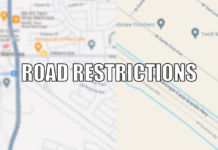“The 2020 traffic projections for the Maricopa-Casa Grande Highway Corridor are extremely high,” Project Manager Troy Sieglitz told those at the public information meeting Tuesday night. Those projections indicate that 75,000 cars per day will be traveling the southern end of the corridor near Casa Grande. To the north and west 37,000 vehicles will be on that roadway each day.
When Maricopa incorporated in 2003, the city gained ownership of a portion of the corridor along with the Ak-Chin Community, Pinal County, the City of Casa Grande and the Union Pacific Railroad. Each of these stakeholders owns or is responsible for various portions of the highway. Maricopa Department of Public Works Director Bob Jackson, a resident of Casa Grande, noted, “All jurisdictions really need to work together to make this work.”

Transportation Manager Brent Billingsley has spent many hours on the Maricopa-Casa Grand Highway Project on behalf of the City of Maricopa, one of the major stakeholders.

Mayor Kelly Anderson points out one of the alternative routes (like the one below). Project Manager Troy Sieglitz (right) takes notes on residents’ questions and comments on the project.

“The main focus is on getting information from you, your input,” said Transportation Manager Brent Billingsley. Public response to the three proposed alternate routes for the corridor was solicited at the forum.
The three proposed alternatives include: a Steen Road to Farrell Road connection, running along the Santa Rosa Wash; a Farrell Road direct connection and a Peters and Nall Road direct connection. Each alternative is designed to move traffic off the congested corridor. “We can get the Maricopa-Casa Grande Highway to operate efficiently in the year 2020,” explained Billingsley.
Given the three plans, the Peters and Nall alternative is probably the least expensive since the Steen to Farrell Road route involves a connecting roadway while the Farrell Road direct involves a large interchange.
The study was intended to provide reconstruction options for the Maricopa-Casa Grande Highway. Some of the components studied were access, capacity, environment, right of way, funding sources and safety issues. In terms of infrastructure, Sieglitz noted, “It’s an old highway; it’s starting to deteriorate.
One of the original plans was to widen the corridor to six lanes. If undertaken, the widening would have to take place only on one side. The Union Pacific Railway plans to double track soon, eventually putting in a third track, according to Sieglitz.
The Maricopa-Casa Grande Highway Study will be completed next month. The document will go to the City of Maricopa with recommendations from the consulting firm, PBS & J, then on to city council for its ratification as a planning document.
“This is a very large, very complicated, very expensive project,” Billingsley told the audience. “It will be completed through logical phasing of improvements over time, based on need.” He explained that the project might go from additional lanes to signals to interchanges.
“One of the first things will be an upgraded drainage facility. There’s an immediate need,” said Sieglitz.
Billingsley added, “It’s important to implement a quality project for the future.”
Maricopa residents wishing to provide comments on the project should contact Billingsley at (520) 568-9098, ext. 243, by Feb. 7.









![City gave new manager big low-interest home loan City Manager Ben Bitter speaks during a Chamber of Commerce event at Global Water Resources on April 11, 2024. Bitter discussed the current state of economic development in Maricopa, as well as hinting at lowering property tax rates again. [Monica D. Spencer]](https://www.inmaricopa.com/wp-content/uploads/2024/04/spencer-041124-ben-bitter-chamber-property-taxes-web-218x150.jpg)



![Maricopa’s ‘TikTok Rizz Party,’ explained One of several flyers for a "TikTok rizz party" is taped to a door in the Maricopa Business Center along Honeycutt Road on April 23, 2024. [Monica D. Spencer]](https://www.inmaricopa.com/wp-content/uploads/2024/04/spencer-042324-tiktok-rizz-party-flyer-web-218x150.jpg)



